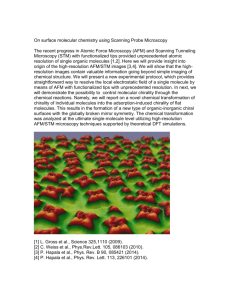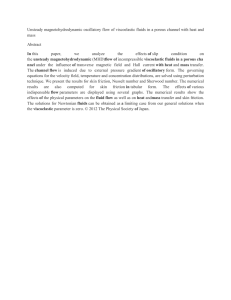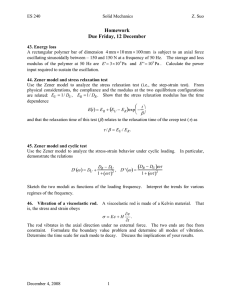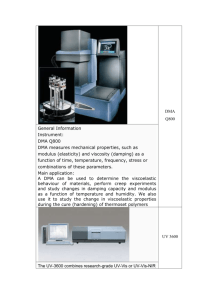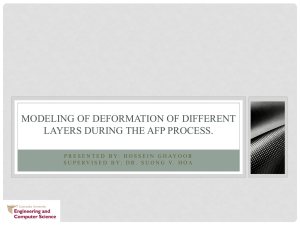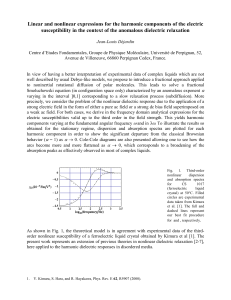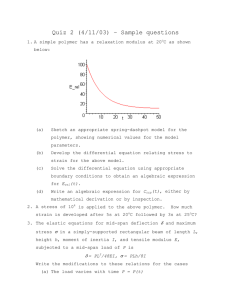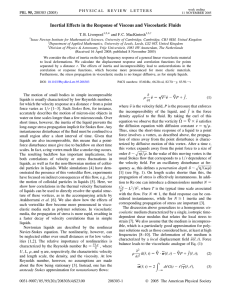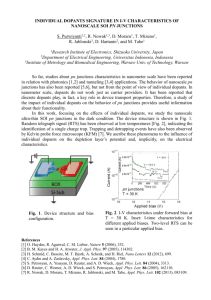Understanding and manipulating liquids and solids at the nanoscale
advertisement
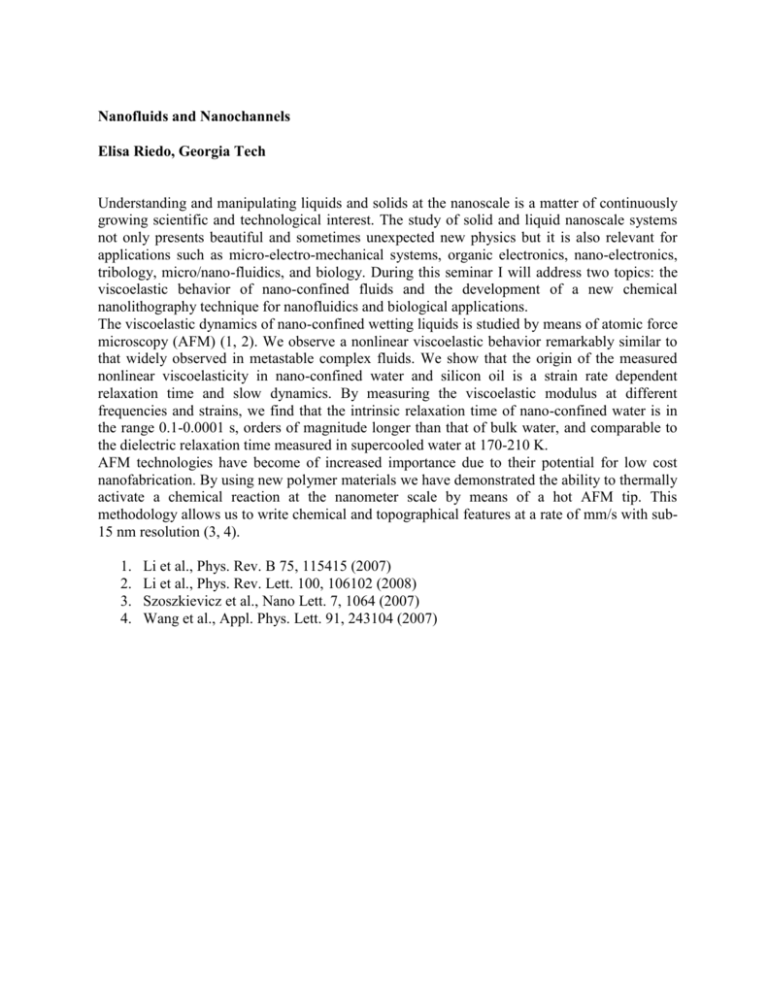
Nanofluids and Nanochannels Elisa Riedo, Georgia Tech Understanding and manipulating liquids and solids at the nanoscale is a matter of continuously growing scientific and technological interest. The study of solid and liquid nanoscale systems not only presents beautiful and sometimes unexpected new physics but it is also relevant for applications such as micro-electro-mechanical systems, organic electronics, nano-electronics, tribology, micro/nano-fluidics, and biology. During this seminar I will address two topics: the viscoelastic behavior of nano-confined fluids and the development of a new chemical nanolithography technique for nanofluidics and biological applications. The viscoelastic dynamics of nano-confined wetting liquids is studied by means of atomic force microscopy (AFM) (1, 2). We observe a nonlinear viscoelastic behavior remarkably similar to that widely observed in metastable complex fluids. We show that the origin of the measured nonlinear viscoelasticity in nano-confined water and silicon oil is a strain rate dependent relaxation time and slow dynamics. By measuring the viscoelastic modulus at different frequencies and strains, we find that the intrinsic relaxation time of nano-confined water is in the range 0.1-0.0001 s, orders of magnitude longer than that of bulk water, and comparable to the dielectric relaxation time measured in supercooled water at 170-210 K. AFM technologies have become of increased importance due to their potential for low cost nanofabrication. By using new polymer materials we have demonstrated the ability to thermally activate a chemical reaction at the nanometer scale by means of a hot AFM tip. This methodology allows us to write chemical and topographical features at a rate of mm/s with sub15 nm resolution (3, 4). 1. 2. 3. 4. Li et al., Phys. Rev. B 75, 115415 (2007) Li et al., Phys. Rev. Lett. 100, 106102 (2008) Szoszkievicz et al., Nano Lett. 7, 1064 (2007) Wang et al., Appl. Phys. Lett. 91, 243104 (2007)

